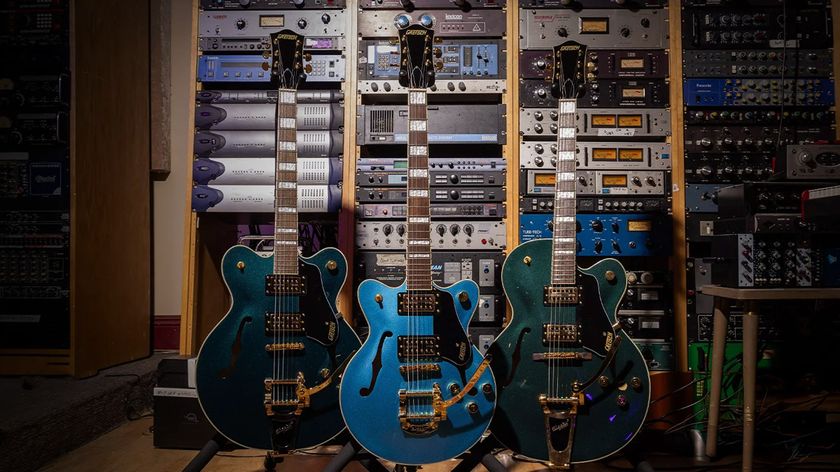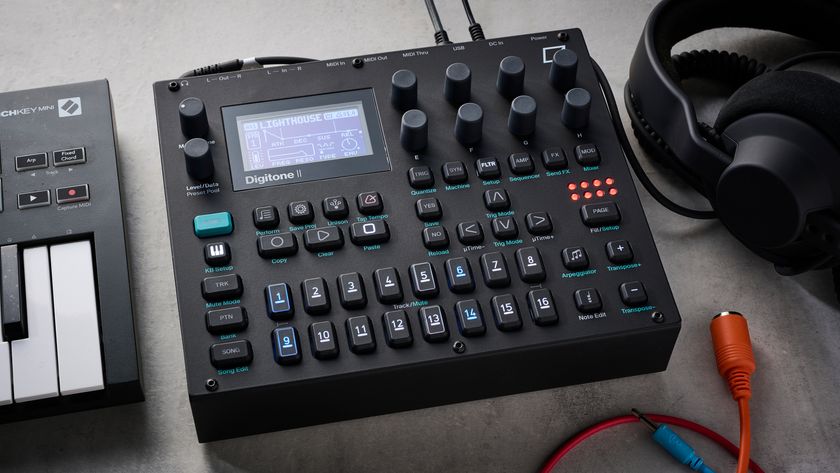MusicRadar Verdict
Geist is one of the best virtual drum machines around and will more than satisfy those who've been waiting patiently for a Guru sequel.
Pros
- +
Fun and easy to use. Top-notch FX. Great workflow. Awesome library. Almost limitless potential.
Cons
- -
Can be CPU-heavy if pushed. Maybe daunting for first time users.
MusicRadar's got your back
Back in 2005, FXpansion released a virtual drum machine called Guru. In many ways, it challenged convention, and hence it was adopted by a slew of name dance producers.
Geist replaces Guru in FXpansion's product line and is essentially its spiritual successor (though it's important to note that its code has been written from scratch).
"Just like Guru, Geist does a great job of capturing the subtle nuances of your groove."
It continues in the same vein, built as an all-in-one electronic drum solution where workflow rules all. Guru owners will take to it quickly. Geist deals with sampled loops and single hits. It comes with a super-high-quality sound library, featuring contributions from artists including Armin Van Buuren, D Ramirez and Sharooz.
It can slice loops into individual hits, for assignment to one of 16 pads. In fact, it can store up to eight samples per pad, with useful features such as velocity split and random trigger.
The pad concept is an evolution of that of popular hardware drum boxes like Akai's renowned MPC series. In Geist, each pad has a track in the pattern editor. The latter is both incredibly easy to use and sublimely detailed, featuring automation lanes in which you can twist up the sound by modulating several parameters, from pitch and velocity to send levels and pad effects settings.
Quality mixing tools are provided at pretty much every conceivable point in the signal chain, enabling you to polish your drum mix to a fine sheen. The internal effects sound as good - if not better - as those bundled with most DAWs, and there's no shortage of them either, with 30 to choose from.
Overloud's Breverb algorithms have been licensed for reverb modules, while FXpansion's DCAM circuit-modelling technology has been used on some of the saturation, compression and filter modules. It sounds surprisingly convincing, especially on the compressors.
Number crunching
24 patterns and a full set of 16 pads constitute an 'engine', of which there are eight. Think of it as eight instances of Geist, but all accessible from one interface and triggerable as the same MIDI device.
It means that you're unlikely to ever run out of pads or patterns, and makes more sense than having an enormous, unmanageable interface that you have to wrestle with to access its power.
Recording patterns via a MIDI controller (or even the mouse) gives a real 'hands-on' feel and, just like Guru, Geist does a great job of capturing the subtle nuances of your groove; unlike Guru, it has up to 1024 steps per pattern.
Recording in Geist is great fun and made easier by the new Retro Record functionality, which enables you to rescue rhythms you were jamming out even before you hit record.
How does this work? Well, Geist is essentially recording in the background at all times, so you can capitalise on those spontaneous ideas that pop out while you're just messing around.
Also new is the Sampler page, which is designed to be used on the fly. It can record audio live from an external source and even resample - thus you can use Geist to build a beat, resample it, slice it back into individual hits, remix it with the pattern editor and take full advantage of yet another stage of automation and effects.
We tested this while working on an electro house track and were able to rapidly churn out endless variations on drum fills and glitch-type edits.
This is all made even more fun by the new timestretching tool that's built into every pad layer. It uses an algorithm called Dirac3, and it definitely has its own sound - it's far from grainy and is actually very smooth. It's difficult to make it sound bad, even at extreme values or when applied to problematic sounds like kick drums.
You can route audio from elsewhere within your DAW to Geist's sampler via an additional included plug-in named The Spitter. Its interface is minimal, but that's perfect for what it does. You add The Spitter wherever in your project you'd like to sample from, then select it as an input in Geist. You can use multiple Spitters, too.
Chaos engines
To trigger patterns across several engines simultaneously, you can send MIDI notes on multiple channels. A far more convenient way of doing this, though, is to use 'scenes', whereby you define sets of patterns to trigger from a single MIDI note (a bit like triggering scenes in Ableton Live's Session view).
These scenes are an ingenious, powerful way of accessing everything at once in a live situation. It makes Geist feel like a real instrument, because the entire process, from sampling to sequencing, can be done in a hands-on, real-time way.
FXpansion have expanded this scenes concept further with the new song page, where you can arrange your entire drum track within Geist's deceptively modest interface. The GUI is based on the classic sequencer view, so on the left-hand side are the eight engine tracks, while along the top you'll find all of the song position/bar numbers.
In song mode, you draw in the patterns you want to trigger and jam over the top. This is another area in which the new Retro Record feature comes in handy - it means you can freely experiment until you have something you like and then use that pattern, even if you're not sure exactly how you did it - taking away the stress of having to perform on demand.
The friendly ghost
A lot of musicians are going to fall madly in love with Geist, especially those producing dance, hip-hop, R&B or pretty much anything that requires a tight creative flow and a killer groove.
The only drawbacks we found are related to the power of the thing: there's a lot you can learn to do with Geist and if you push it hard enough, it will start to make pretty serious demands on your CPU.
It wouldn't be fair to mark the software down for that, though, and ultimately, Geist delivers everything it promises - and then some.
Computer Music magazine is the world’s best selling publication dedicated solely to making great music with your Mac or PC computer. Each issue it brings its lucky readers the best in cutting-edge tutorials, need-to-know, expert software reviews and even all the tools you actually need to make great music today, courtesy of our legendary CM Plugin Suite.

Watch Eloy Casagrande batter the hell out of Slipknot’s ‘unplayable live’ Gematria (The Killing Name) in new 'drums only' video

Sabrina Carpenter is set to be the next music star to appear within global video game phenomenon Fortnite

“Exceptional performance, sound, and style at an incredible value.”: Gretsch unveils trio of limited edition Streamliner electrics that offer Bigsby wobble, semi and hollow-bodied rock ’n’ roll mojo for $699











